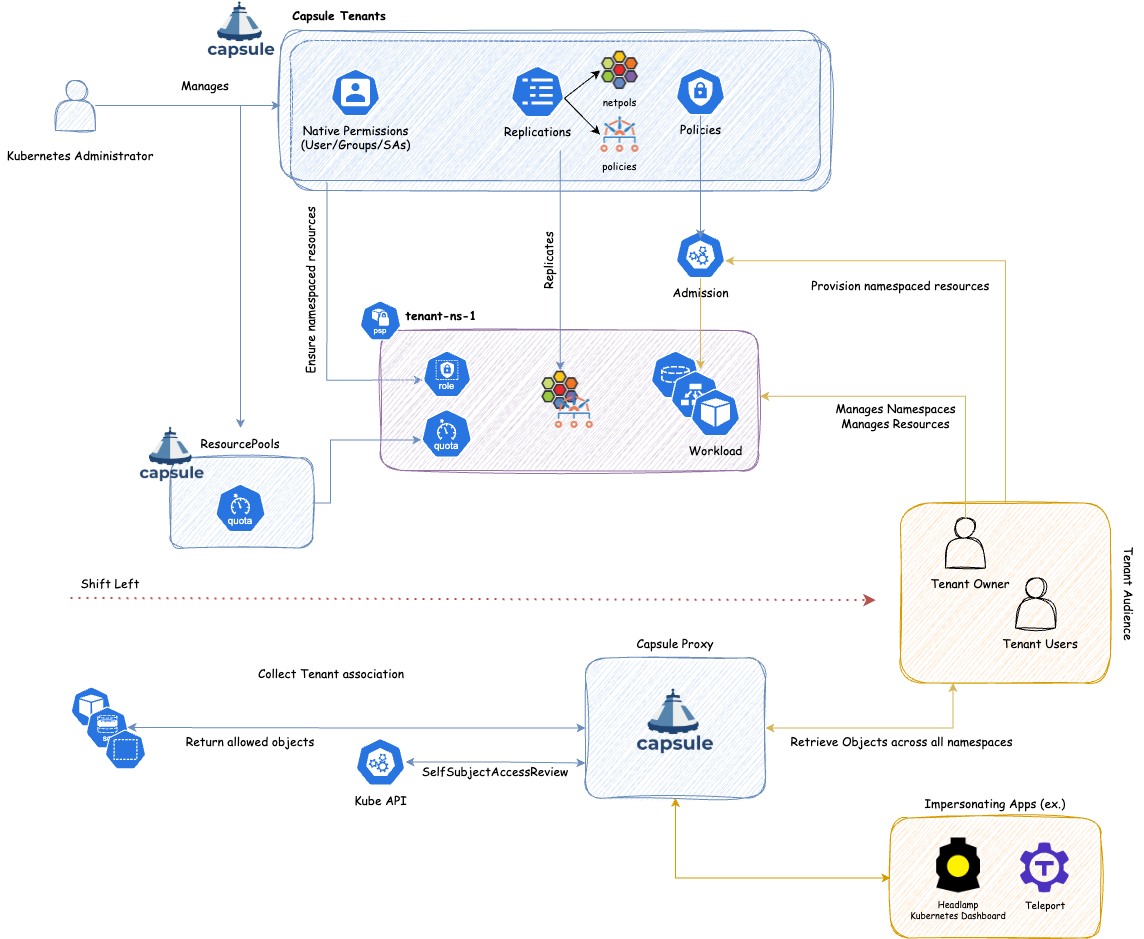Benchmark
Multi-Tenancy Benchmark
Capsule implements a multi-tenant and policy-based environment in your Kubernetes cluster. It is designed as a micro-services-based ecosystem with the minimalist approach, leveraging only on upstream Kubernetes
With capsule you have an ecosystem which addresses the challenges when it comes to having multiple parties on a shared Kubernetes Cluster. Let’s look at a typical scenario for the usage of Capsule

As shown, we can create a new boundary between Kubernetes (Cluster) Administrators and Tenant Audiences. While the Kubernetes Adminsitrators define the boundaries on a Tenant, the Tenant Audience can act within the namespaces of a Tenant. For the Tenant audience we differenciate between Tenant Owners and Tenant Users. The main Perk Tenant Owners have is the creation of namespaces within the tenants they are owner off. WIth the enabling them to act within the tenant and therefor achieveing a shift left from being dependant on a Kubernetes Administrator to have Responsability shifted to the Tenant Owners.
Kubernetes introduces the Namespace object type to create logical partitions of the cluster as isolated slices. However, implementing advanced multi-tenancy scenarios, it soon becomes complicated because of the flat structure of Kubernetes namespaces and the impossibility to share resources among namespaces belonging to the same tenant. To overcome this, cluster admins tend to provision a dedicated cluster for each groups of users, teams, or departments. As an organization grows, the number of clusters to manage and keep aligned becomes an operational nightmare, described as the well known phenomena of the clusters sprawl.
Capsule takes a different approach. In a single cluster, the Capsule Controller aggregates multiple namespaces in a lightweight abstraction called Tenant, basically a grouping of Kubernetes Namespaces. Within each tenant, users are free to create their namespaces and share all the assigned resources.
On the other side, the Capsule Policy Engine keeps the different tenants isolated from each other. Network and Security Policies, Resource Quota, Limit Ranges, RBAC, and other policies defined at the tenant level are automatically inherited by all the namespaces in the tenant. Then users are free to operate their tenants in autonomy, without the intervention of the cluster administrator.
Capsule does not aim to solve the following problems:
Multi-Tenancy Benchmark